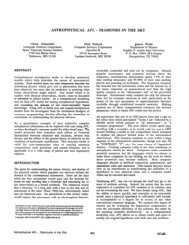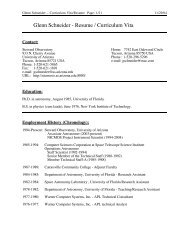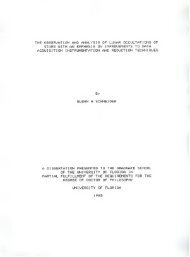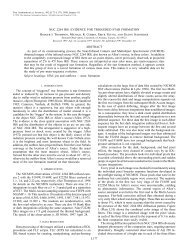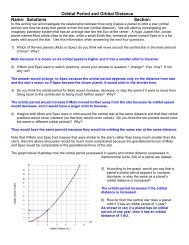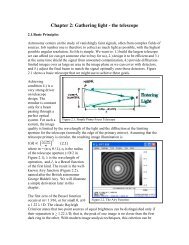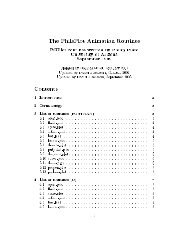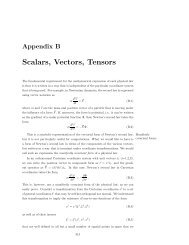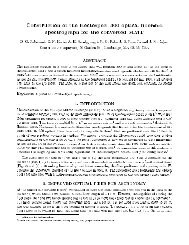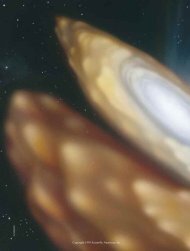Solutions for Homework #2
Solutions for Homework #2
Solutions for Homework #2
Create successful ePaper yourself
Turn your PDF publications into a flip-book with our unique Google optimized e-Paper software.
part. Since our system also has a central mass (the black hole), the original Maxwellian<br />
distribution function has to be modified, so that<br />
E i = 1 2 v2 + V (44)<br />
where<br />
Our distribution function then is<br />
V = − GM r<br />
(45)<br />
f 0 (v) =<br />
ν 0<br />
GM<br />
e<br />
(2πσ 2 3/2<br />
)<br />
rσ 2 − v2<br />
2σ 2 (46)<br />
The velocity distribution can be derived from<br />
∫ vmax<br />
ν(r) = 4π v 2 f 0 (v)dv (47)<br />
v min<br />
To calculate that, we have to know the boundary velocities. Since we are looking at "unbound"<br />
particles, we know that the smallest allowable velocity is their "free" velocity,<br />
√<br />
which is v min = 2GM/r. The outer velocity boundary has to be ∞. Our starting equation<br />
then becomes<br />
By substituting our Maxwellian distribution, we get<br />
∫ ∞√<br />
ν(r) = 4π v 2 f 0 (v)dv (48)<br />
2GM/r<br />
∫<br />
ν(r)<br />
∞√<br />
= 4π v 2 1 GM<br />
e rσ<br />
ν 0 2GM/r (2πσ 2 3/2 2 − v2<br />
2σ 2 dv (49)<br />
)<br />
This equation is not straight<strong>for</strong>wardly solvable, but can be done using Mathematica,<br />
which immediately gives the desired solution:<br />
√ [ (√<br />
ν(r) rH<br />
= 2<br />
ν 0 πr + rH er H/r<br />
1 − erf<br />
r<br />
)]<br />
(50)<br />
3.b. To obtain the behavior at r ≪ r H , we use equation (1C-13) from Binney & Tremaine<br />
which says:<br />
e−x2<br />
lim (1 − erf x) = √ . (51)<br />
x→∞ πx<br />
6




